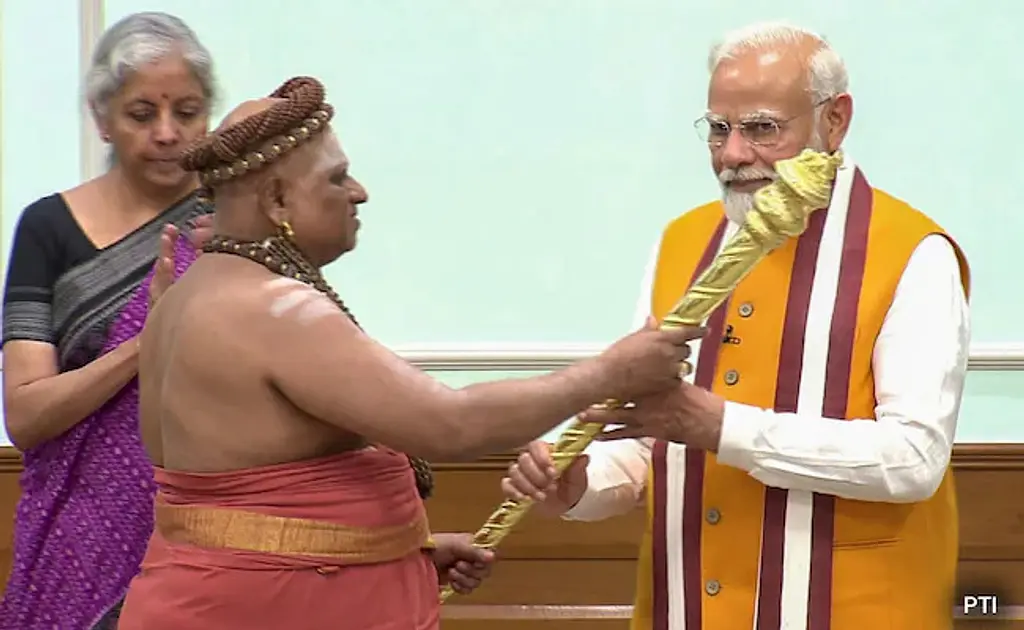Meaning of Sengol
While not widely known outside of certain regions, "sengol" carries a unique meaning that reflects the customs, traditions, and interpersonal dynamics of a specific community.

In a world where symbols and relics carry profound historical and cultural significance, The Sengol, a gold-plated silver sceptre, stands as a remarkable emblem of India's rich heritage. This post delves into the journey of the Sengol, from its inception to its contemporary political and cultural relevance, unraveling its layers of meaning that go far beyond its physical form.
The Historical Significance of the Sengol
A Gift to Nehru on the Eve of Independence
The story of the Sengol begins on the eve of Indian Independence. On August 14, 1947, the Sengol was presented to Jawaharlal Nehru by emissaries from the Thiruvaduthurai Adheenam Matha, a Hindu monastery in Tamil Nadu. This event, though not initially pivotal in public discourse, marked a significant cultural gesture, symbolizing the blessing of Hindu holy men to the first Prime Minister of India.
From Allahabad Museum to New Parliament House
For seventy years, the Sengol was housed in the Allahabad Museum, labeled simply as "Golden Stick gifted to Pandit Jawahar Lal Nehru". Its relocation in 2023 to the New Parliament House in New Delhi, inaugurated by Prime Minister Narendra Modi, brought it back into the limelight, symbolizing a connection between India's past and present.
Contemporary Context and Interpretations
The Government of India, in 2023, propagated the Sengol as a symbol of the transfer of power from the United Kingdom to India, a narrative derived from an article by Hindu nationalist Swaminathan Gurumurthy. However, this narrative faced criticism for its lack of factual evidence and was seen as a political move rather than a historical recounting.
The relocation and use of the Sengol in the inauguration of the New Parliament House were part of the Bharatiya Janata Party's (BJP) strategy to assert its presence in South India. By presenting itself as a champion of Tamil culture, the BJP aimed to gain electoral significance in the region, using the Sengol as a symbol of this cultural connection.
Design and Craftsmanship
Crafted by Vummidi Bangaru Chetty, a jeweler from Chennai, the Sengol is a testament to the exquisite craftsmanship of Indian artisans. The sceptre, about five feet long, is a handcrafted, gold-plated piece encasing a wooden staff, topped with a sitting Nandi symbolizing justice and sturdiness. Its design and make reflect the rich artistic heritage of India.
Reception and Sociopolitical Implications
The reception of the Sengol post-independence, and particularly after its 2023 relocation, has been varied. C. N. Annadurai, a Dravidian nationalist, raised concerns about the socio-political implications of Nehru accepting the Sengol, suggesting it might be construed as a religious endorsement of the new government.
In 2023, political analysts and media outlets like The New York Times commented on the Sengol as an encapsulation of India's move away from its colonial past and secular governance. However, some critics found the use of a monarchical relic in a parliamentary democracy unsuitable, sparking a debate about the appropriate symbols for a modern, secular India.
Conclusion
The Sengol, in its journey from a gift to Nehru to a celebrated relic in the New Parliament House, serves as a mirror reflecting India's evolving identity. It stands at the intersection of religion, politics, and culture, representing different things to different people - a symbol of blessing, a political tool, a masterpiece of craftsmanship, and a subject of contention.
As India continues to navigate its path as a diverse and dynamic nation, the Sengol remains a poignant reminder of its complex history and the ongoing dialogue between its past and present. Understanding the meaning and significance of such symbols is crucial as they often carry the weight of a nation's collective memory and aspirations. The Sengol, therefore, is not just a sceptre but a narrative of India's rich and multifaceted heritage.
Published on
Updated on